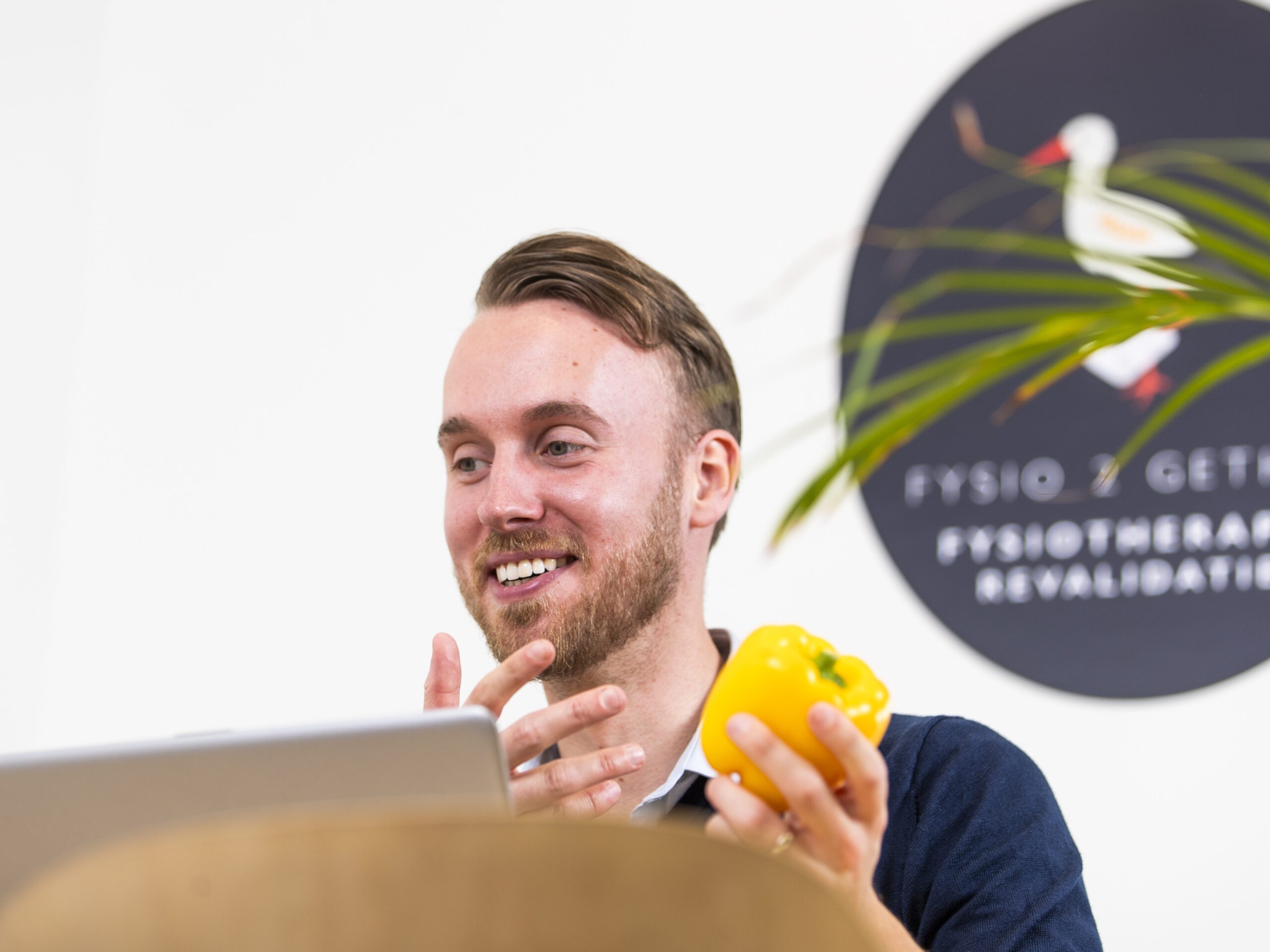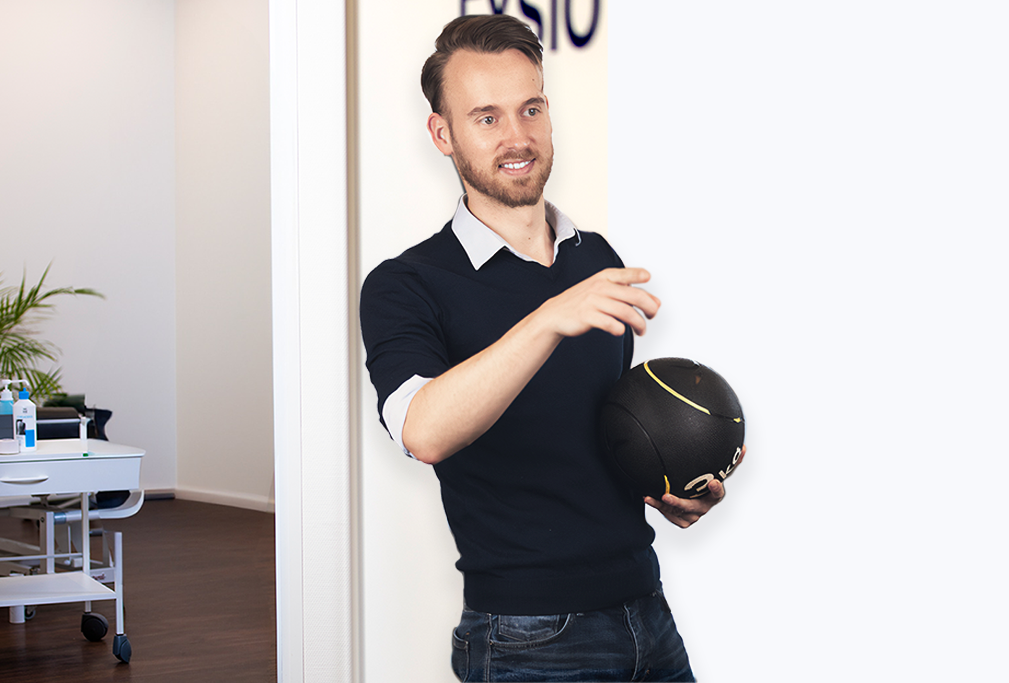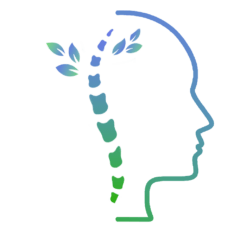Optimotion
Physical Therapy
Achieve optimal motion with the help of a guided exercise plan.
Orthomolecular Therapy
Achieve optimal balance through nutrition and supplements.
Bioresonance Therapy and Transformational Cupping
Achieve optimal bodily harmony with the help of electromagnetism and cupping therapy.
Occupational Physiotherapy
Prevent long-term health problems with proactive physiotherapy care.
Physical Therapy
Achieve optimal motion with the help of a guided exercise plan.
Orthomolecular Therapy
Achieve optimal balance through nutrition and supplements.
Bioresonance Therapy and Transformational Cupping
Achieve optimal bodily harmony with the help of electromagnetism and cupping therapy.
Occupational Physiotherapy
Prevent long-term health problems with proactive physiotherapy care.
Matthieu den Hoedt
Physical Therapist & Certified Orthomolecular specialist
Matthieu den Hoedt, graduated as a physiotherapist from the University of Applied Sciences Leiden in June 2021. Since April 2021, I have been working at various practices in the Rotterdam region. Currently, I am working in both Rotterdam and The Hague. While working as a physiotherapist, I continue to strive for professional development. I am very ambitious and eager to learn.
In addition to my work as a physiotherapist, I also try to learn more about ‘alternative’ holistic medicine. I believe it is important to utilize the body’s natural healing power and the resources we have around us, such as nutrition, vitamins, minerals, supplements, etc. My interest in a natural and holistic approach will continue to grow. I plan to focus more on orthomolecular nutrition in combination with bioresonance.


Frequently Asked Questions
What is Physical Therapy?
Physical Therapy is a healthcare profession that focuses on the assessment, diagnosis, and treatment of physical impairments, disabilities, and pain through the use of various therapeutic exercises, manual techniques, and modalities. The goal of physical therapy is to improve and restore functional movement, enhance physical performance, and prevent further injury or disability. I develop individualized treatment plans tailored to their specific needs. These plans often include exercises to improve strength, flexibility, balance, and coordination, as well as techniques such as massage, mobilization, and the use of equipment like ultrasound and electrical stimulation.
What is Orthomolecular Therapy?
Orthomolecular Therapy is a form of alternative medicine that focuses on the optimal balance of naturally occurring substances in the body, such as vitamins, minerals, amino acids, and fatty acids, to maintain health and treat diseases. Its approach is based on first and foremost achieving a healthy and balanced diet and using supplements to counteract any deficiencies.
The term “orthomolecular” was coined by Nobel Prize-winning chemist Linus Pauling, who advocated for the use of high doses of nutrients tailored to individual needs. Proponents of this therapy believe that imbalances or deficiencies in these substances can lead to a variety of health issues and that restoring the correct balance can help prevent or treat illnesses, enhance overall well-being, and promote longevity.
The practice of Orthomolecular Therapy involves personalized assessments of patients’ biochemical makeup through various diagnostic tests, followed by customized supplementation plans. These plans often include high doses of specific vitamins and minerals, far exceeding the recommended daily allowances
What is Bioresonance Therapy?
Bioresonance Therapy is a complementary and alternative medical treatment that involves the use of electromagnetic waves to diagnose and treat various health conditions. The underlying principle of this therapy is that every cell in the body emits electromagnetic frequencies, and imbalances or disruptions in these frequencies can indicate disease or dysfunction. Bioresonance devices, such as the MORA or BICOM machines, are used to detect these electromagnetic waves and purportedly correct any imbalances by sending specific frequencies back into the body, aiming to restore harmony and promote healing.
The therapy typically involves non-invasive sessions where electrodes are placed on the skin to measure the body’s frequencies and deliver corrective signals.
What is Transformational Cupping?
Transformational cupping is a modern wellness practice that blends the ancient art of cupping therapy with holistic healing techniques to promote both physical and emotional transformation. Traditional cupping involves placing glass or silicone cups on the skin to create suction, which helps to stimulate blood flow, reduce inflammation, and release muscle tension. In transformational cupping, this method is expanded to focus not only on the physical body but also on emotional and energetic blockages. By drawing out toxins and stagnant energy, practitioners aim to release deep-seated emotional stress, trauma, and tension, helping the body and mind to achieve a state of balance and renewal.
This approach to cupping is often paired with practices like breathwork, meditation, and sound healing, enhancing its holistic impact. As the cups work to detoxify the body and ease physical pain, the therapeutic environment encourages introspection and emotional release, leading to a profound sense of relaxation and personal transformation. Advocates of transformational cupping believe it can help with a range of issues from chronic pain and fatigue to emotional trauma and anxiety, making it a comprehensive approach to both physical healing and emotional well-being.
What is Occupational Physiotherapy?
Occupational physiotherapy focuses on the prevention and treatment of complaints related to posture and the musculoskeletal system that are connected to work. An occupational physiotherapist analyzes working postures, strenuous movements, and work processes to prevent or reduce health issues such as back, neck, and shoulder complaints. This type of physiotherapy is suitable for employees with early-stage complaints as well as for organizations aiming to reduce absenteeism and promote the sustainable employability of their staff. Treatment and advice can take place either at the workplace or in the clinic, often in collaboration with company doctors and occupational health professionals.
Occupational physiotherapy can be part of a broader Preventive Medical Examination (PME) conducted in the office. During a PME, employees are proactively screened for health risks related to work, such as physical strain, posture, and movement behavior. An occupational physiotherapist can provide targeted advice or interventions to prevent complaints, improve posture, and boost vitality. Combining occupational physiotherapy with a PME contributes to sustainable employability and a healthy working environment.
Is an intake covered by my insurance?
Most conventional insurance plans cover intakes. Normally it counts as two of the sessions covered by your insurance plan.
For high-quality supplements, I recommend Nutribites.

Address
Esperantostraat 12
2518 LH Den Haag
Work Hours
Monday – Friday
9 AM – 5 PM

